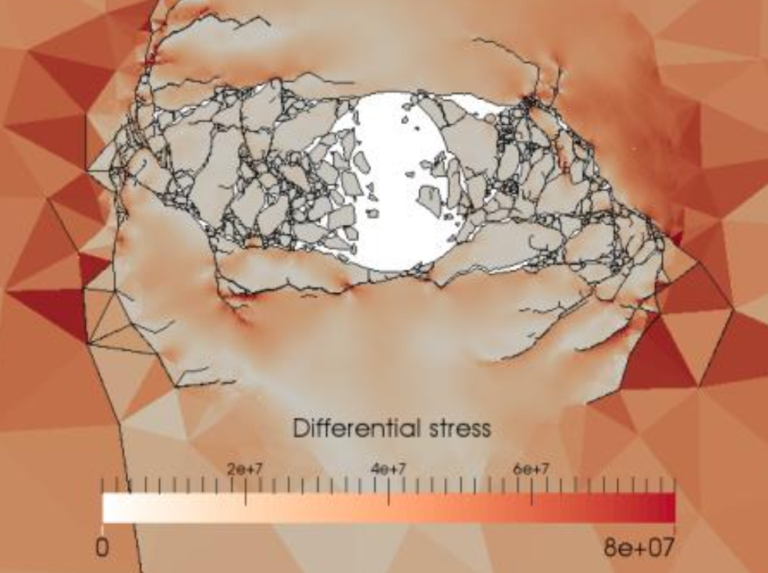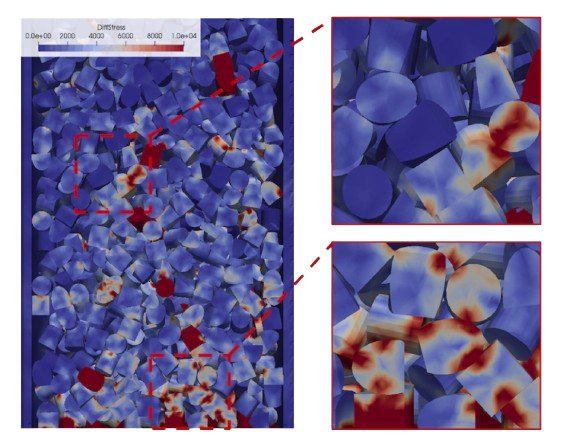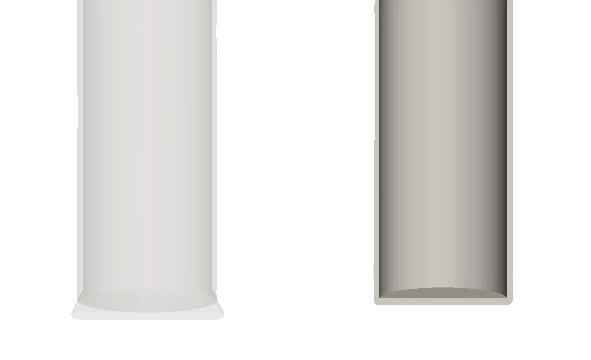Menu
Uncover the technology that powers tanuki™
The Finite Element Method (FEM)
The Finite Element Method (FEM) is a powerful numerical tool for solving complex physical problems, especially in areas such as solid mechanics, fluid mechanics, thermal problems, and their combinations. By discretising a solid domain into a mesh of smaller elements, FEM allows for the calculation of stress, strain, and displacement under various load conditions. It is used to simulate the structural response of materials, providing insights into their behaviour under stress, deformation, thermal, and fluid pressure effects.

Simulating discrete fracture
There are many approaches to simulate fractures (e.g. phase field methods), but many of them are not capable of correctly representing the discontinuous deformations and displacements due to a crack. Cohesive elements enhance FEM by enabling the simulation of discrete fractures within materials. These elements represent crack initiation and propagation using material-specific traction-separation laws, making them invaluable for studying brittle fracture, shear failure, and separation. Cohesive elements help predict fracture paths and assess the mechanical durability of materials and structures under conditions that may lead to failure.

The combined Finite-Discrete Element Method (FDEM)

The Combined Finite-Discrete Element Method (FDEM) offers an advanced solution for scenarios involving extensive sliding, fragmentation, and large deformations. By integrating FEM with discrete element modelling (DEM), FDEM simulates internal stresses within solid elements and interactions between fragments and blocks. This approach is essential for materials that undergo significant break-up, such as rock formations, concrete, and granular materials. By capturing both continuous and discrete behaviours in a unified framework, FDEM provides superior accuracy in analysing complex processes beyond the scope of traditional FEM or DEM.
Multi-body contact interactions
Multi-body contact interactions are crucial in accurately modelling systems where multiple solid bodies come into contact, such as mechanical assemblies, granular flows, or fractured materials. These interactions involve the calculation of contact forces and deformations between different bodies, which can be challenging due to the nonlinearity and complexity of contact mechanics. DEM, is often used to model these interactions, enabling the prediction of contact forces, frictional behaviour, and resultant deformation. This is particularly important in simulations where contact conditions significantly affect the system's performance and stability, such as during rock faulting, and catastrophic failure of structures.

References
The Combined Finite-Discrete Element Method
A Munjiza
John Wiley & Sons
Simulation of fracture propagation in fibre-reinforced concrete using FDEM: an application to tunnel linings
A Farsi, A Bedi, JP Latham, K Bowers
Computational Particle Mechanics 7 (5), 961-974
Strength and fragmentation behaviour of complex-shaped catalyst pellets: A numerical and experimental study
A Farsi, J Xiang, JP Latham, M Carlsson, EH Stitt, M Marigo
Chemical Engineering Science 213, 115409
Tanuki Technologies Ltd, 1a Marshall St, Soho, London W1F 9BA, United Kingdom | e-mail: info@tanuki.ai
Copyright © 2022 Tanuki Technologies Ltd. All rights reserved. tanuki™, tanuki.ai and the tanuki logo are registered trademarks of Tanuki Technologies Ltd in the United Kingdom of Great Britain and Northern Ireland and/or other countries. Tanuki Technologies Ltd is registered as a private company limited by shares with company number 13916247 in England and Wales under the Companies Act 2006.